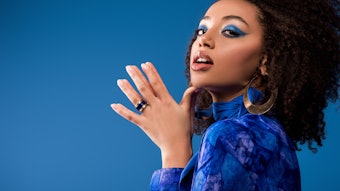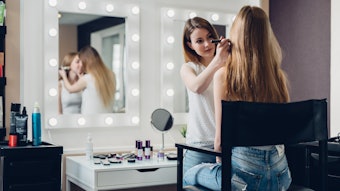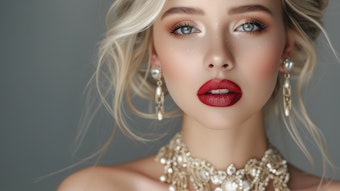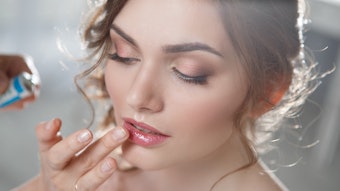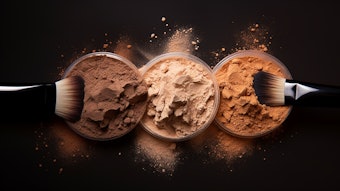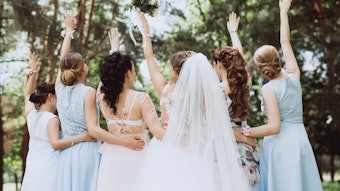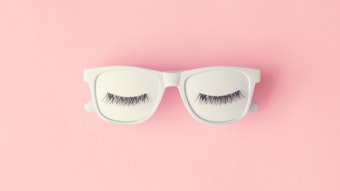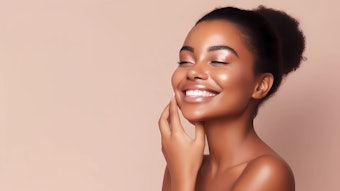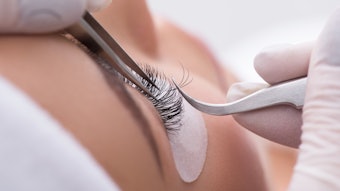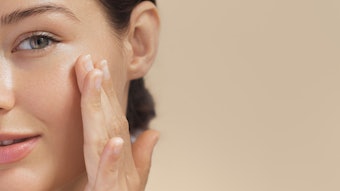Today, the field of esthetics is growing by leaps and bounds with the proliferation of day spas in women’s gyms, specialty salons, dental spas and even facilities that exclusively offer eyebrow services.
The growth is phenomenal—but, from a business perspective, it is just the tip of the iceberg.
In Beverly Hills, California, there are several spas—such as Damone Roberts, Brow Boot Camp, Valeries and Anastasia—that specialize in eyebrow shaping. Their clientele includes actresses, singers, TV personalities and socialites. The top spas charge $55 for the initial consultation, design and service, and $45 for follow-up maintenance visits. Just recently, a fashion magazine noted that many spas in New York have followed suit. These same spas provide esthetic skin care services, as well as retail skin care and makeup products. However, the most popular menu item is eyebrow shaping.
Why eyebrows?
Brows are to the eyes what a frame is to a painting. The frame focuses the viewer’s attention by distinguishing the art from its environment, in addition to providing a harmonious and defining setting for the picture. Eyebrows direct this same defining focus to the eyes. Brows are a key element in facial nonverbal communication because they convey attitudes, feelings and sentiments. They also add an emphasis to spoken communication. In essence, eyebrows reflect our outward signs of beauty, as well as the inward indications of our emotions.
Historically in Western cultures, eyebrows have taken many shapes and designs—from the bushy Neanderthal brow to the denuded, fully plucked 15th-century brow to false brows made of mouse skin in 18th-century England. In early theater, eyebrows were fashioned in an exaggerated form to convey the characters’ emotional state to the audience at the far back of the house. Since its inception in the 1920s, the world of motion pictures has continued to influence fashionable eyebrow trends.
The esthetic world
Balanced and symmetrical eyebrows consist of a natural, yet fashionable, shape that opens the eyes and helps to create a vision of beauty. The classic eyebrow shape transcends fads, trends and momentary fashion because it enhances all of a woman’s facial features. When creating this type of brow, there are three basic elements to consider: balance and symmetry, design and shape, and color and maintenance.
Balance and symmetry. The face and its features—including the mouth, eyes and eyebrows—never are balanced symmetrically. While attempting to achieve a beautiful brow, it is important to bring all of the features into balance with each other in order to produce a proportioned look. The eyebrows are the most visible facial feature in which imbalance and asymmetry are apparent. Because we draw attention to our brows repeatedly by using them to add emphasis in conversation or for expression, it is important that they remain as realistically symmetrical as possible, providing maximum facial beauty and nonverbal communication capabilities.
In achieving balance and symmetry for the eyebrows, you should follow these basic rules.
1. Starting point. Where should the brows start? Are they too close together or too far apart? If the eyebrows are too far apart, the end of the nose appears pinched. If the brows are too close together, it creates a masculine look and a slight frown, and the end of the nose appears larger than it is.
2. Arching. Where should the brows arch? Should each brow arch toward the inside of the eye, or should they arch exactly over the center of the eye? If the height of the arches is too close to the nose, it gives the appearance of a sad, dissatisfied or angry look. With the height of the arches exactly over the center of the eyes, it gives a tight or pinched look to the middle of the face.
3. Ending point. Where should the brows end? Should the brows end just after the arches, or should they end exactly over the eyes, straight out? Should they come down and end by the outside corner of the eyes? If the brows end just after the arches, they will be too short and give the eye area an unfinished look. When brows extend straight out, the eye area appears expressionless, artificial and a bit sinister. If the brows end downward and too close to the eyes, it will close down the eye area, minimizing the area available for glamorizing and also creating a sad look.
To determine where the brows should end, draw a line from the outside corner of the nose to the outer corner of the eye, extending past the brow area. This gives you a finishing point for the brow, which will be in direct proportion, balance and relationship to the nose, eyes and brows.
4. High and low. How high or how low should the brows be? Should the brows be high on the forehead? If they are too high, it will create a look of surprise or astonishment and give the illusion that the eyes are smaller. If the brows are too low, it will create the appearance of contempt or mistrust and also cause the eyes to appear larger in proportion to the face.
Determining the proper height of the eyebrow is based on line, form and balance in the relationship to the facial anatomy.
5. Thickness and thinness. How thick or how thin should the brows be? If the brows are too thick or heavy for the face, it will appear slightly masculine. A thick brow will limit the expression of nonverbal communication and close down the eye area, minimizing the space available for eye makeup, contouring and decoration. If the brows are too thin, they will look hard, cold, artificial and faddish. Thin brows make the face appear fatter or larger proportionally, while diminishing the facial expression of nonverbal communication.
The width of the brow is determined by the makeup artist’s perception of her client’s entire body image, bone structure, body size and, especially, the proportions of the facial features.
6. Eyebrow hair. What if eyebrow hair is too long and unruly? Excessively long hair in the brows makes it difficult to manage balance and symmetry. It can make them look unkempt and bulky. If brow hair is too long in the height of the arches, it can create a sinister or demonic look. There are two methods used for correcting this problem. See Maintaining Brow Hair Length.
Design and shape. Eyebrows play a powerful role in creating facial expressions. Every time our mood alters, the position of our eyebrows changes. These changes are manifested in distinct shapes that are understood universally. Consider the marked contrast between arched brows of greeting or pleasant surprise and the oblique eyebrows of distress.
Brows also are used as contrived signals, being raised or lowered to express an emotion consciously and deliberately. Even when in a relaxed state, eyebrows communicate—their shape determines the message or emotion that we want to send and indicates how we want to be responded to socially. Whether the shape is natural, yet fashionable and friendly—inviting people to communicate with us, or hard and artificial—giving the impression that we are cold, indifferent and unapproachable, it determines how we are perceived. See also Facial Expressions.
Depending on the shape of the brows, certain emotions are conveyed, including the following.
• Flat and uninteresting
• Round and quizzical
• Frowning and angry
• Downward-turning and sad
Color and maintenance. The coloring of the eyebrows is accomplished by using a brow shade that is similar to the color of the head hair, creating a contrast in values between the eyebrows and the complexion. One approach maintains that the color of a person’s brows must match their hair. However, this may not always be the best choice.
1. For platinum and light blondes, the brows would disappear.
2. For redheads, the brows would look too understated.
3. For fair-skinned brunettes, black-colored brows against their light skin tone would appear harsh and artificial-looking.
Because this theory doesn’t work for everyone, there are a number of different methods for enhancing eyebrow color.
• Wooden eyebrow pencils
• Plastic or metal mechanical pencils with thin to thick leads
• Self-sharpening pencils
• Brush-on compressed powder
• Brow and lash dye
• Bleach for excessively dark brows
• Tattooing or permanent makeup for sparse or nonexistent brows
My preference is a 7-inch wooden brow pencil, sharpened with a single-edge razor blade or a multipurpose snap-off blade cutter. This enables me to make thin, natural hairlike strokes in the direction in which the brow grows. My second preference is a fine-line mechanical pencil that also creates dimensional hairlike strokes. Some eyebrow pencil leads are firm, while others are soft. The soft ones have a tendency to wear down fast and to smudge easily.
Brush-on brow powder colors the skin and does not leave natural-looking hairlike strokes. Lash and eyebrow dye only affects the existing brow hair and does nothing for the sparse areas. As a result, once the brow hair is the desired color, a pencil still will be needed to fill in and enhance. Tattooing and permanent cosmetics may lead to an unnatural shape and a solid coloring that produces an extremely artificial look.
Capitalize on eyebrows
You can develop a lucrative specialty service with eyebrow shaping and designing. These techniques will set you and your business apart in the field of personalized makeup artistry in today’s fast-paced and competitive economy. When you develop the knowledge and skills for this much-needed service, you also will develop a loyal and growing clientele.
Author’s note: Sixteen years ago, I wrote my first article “Balance and Symmetry of Eyebrows,” for a budding young skin care publication called Skin Inc. magazine. How time flies!
